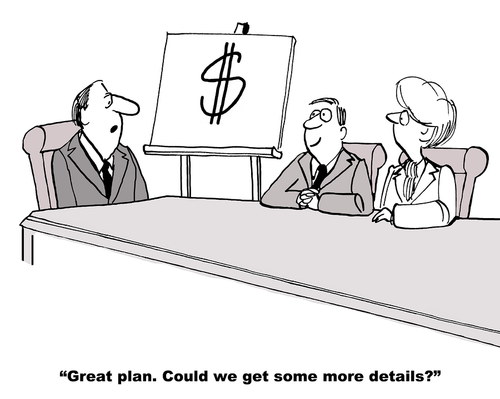Success in any business depends a great deal on how well you manage the details. I like to say the “dollars are in the details.” However, many business owners and managers are overwhelmed by the minutiae of daily business life. They haven’t discovered where to focus attention to accomplish the most good for the least amount of time, effort, and cost.

Most operational details causing frustration and hindering results are not obvious; if they were, you could quickly fix them. So how do you uncover the obstacles, weak links, bottlenecks, waste, and delay buried in your daily business processes? More importantly, how can you spend your valuable time solving the most important problems—the ones with the greatest impact on customer satisfaction and your bottom-line profit?
The Root Cause
With business problems, we often tend to focus on symptoms such as excessive product returns or unproductive employees, and fail to discover the true source of the problem—the “root cause.”
By definition, a root cause “is the most basic cause that can reasonably be identified, and that management has control to fix. The fix will prevent (or significantly reduce the likelihood of) the problem’s recurrence” (Mark Paradies, TapRoot).
In a business setting, the job of the Systems Thinker is to drill-down and pinpoint the exact step within a business process that is under-performing and preventing expected results. Drilling-down is like looking through a microscope to examine the details and discover the underlying cause.
Keep in mind, however, that a symptom may have more than one cause. For example, lack of sales conversions from a website (symptom) may be from an overpriced product, a confusing sales message, or too many “hoops” for the customer to jump through in the buying process (causes). In addition, a single cause can create more than one symptom. An untrained worker could cause customer complaints and frustrated co-workers.
Finding the root cause of business problems is a skill that must be mastered by all business owners and managers. Understanding the Theory of Constraints will help you do just that. Once the true cause—the root cause—of a business problem is identified and fixed, all other dependent systems and processes are simultaneously improved.
Vital Few vs Trivial Many
When picking business improvement projects, it is important to prioritize and focus efforts where they will do the best good and help you achieve fast results. A few targeted improvements can be leveraged to create significant benefits for your organization.
In their book, “Six Sigma for Dummies,” the authors write:
“The law of the ‘vital few versus the trivial many’ comes from the work of early 20th century Italian sociologist and economist Vilfredo Pareto. You may also know his law as the 80-20 Rule, where twenty percent of the inputs in any system account for eighty percent of the influence on that system.
“Pareto determined mathematically that, while a great number of factors are connected to a given outcome, only a few carry the weight to change that outcome in a significant way. In a business, system, or process, a few key variables are the cause of most performance problems. When you look for leverage in business, you search for the minority of variables that provide the majority of power in solving problems in manufacturing, assembly, distribution, accounting, finance, customer service, and so on.
“There are more factors, contingencies, and dynamics to manage than possible when trying to break through to new levels of performance and success. The natural tendency is to try and manage and control every detail, but this is a slippery slope. The trivial many will bury you in a pile of unnecessary cost, trouble, worries, wasted energy, and valueless action. No one, and no company, has the luxury or reason to manage all the details. Instead, the right path is to manage only those that are critical to producing the outcomes you desire. Focus on the inputs that really matter. All the rest, leave alone unless they become significant” (Craig Gygi, Neil DeCarlo, Bruce Williams, 39).
Getting to Work
Focus on the vital few details that will provide the biggest bang for your buck. What systems and processes can you improve that will help you reach company goals? What can you fix to eliminate roadblocks, waste, and inefficiency? What improvements will provide the largest financial payoff? How can you reduce frustration for customers or employees? What tweaks can you make quickly and inexpensively?
Once you pinpoint the vital few areas to focus on—your priorities—the best way to drill down to the root cause is by asking the right questions to the right people—a 5-Whys Analysis.
And please don’t forget, The Box Theory™ Way—software and methodology—is also the best tool around to help you identify the root cause of problems and elevate your business systems and processes for high-performance results.







